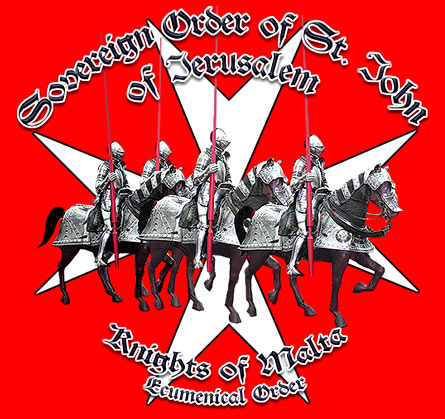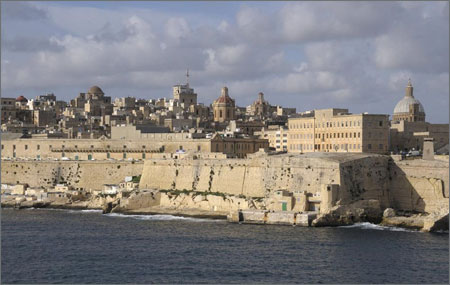Wednesday, October 13, 2010
The Knights of Malta (1530-1798). Integral to Western development.
Without the Knights Italy might well have become Islamic.
by Ferdinand III


In yet another example of 'moderate' Jihad, the Turks lost 90.000 men in investing and taking the island of Rhodes in 1522, defended by fewer than 10.000 Rhodian Knights and auxiliaries. It was a rather immoderate slaughter of Muslim forces by the well defended, and armed Knights of Rhodes and the civilian-militia composed of Rhodian merchants, farmers and foreign mercenaries. Rhodes only fell because the Turkish navy effectively cut off all supplies and forced the defenders into a choice between starvation or surrender. Suleiman the II was so impressed with the bravery of the Knightly order that he conveyed them back to Italy in Turkish ships. The Order than petitioned Charles V of Spain, whose empire controlled most of Italy at the time, for a new home. Charles in an act of percipience and foresight, gave the Knights the island of Malta in 1530 as a new base. He knew full well that the strategically important island which guarded Italy and the shipping lanes of the central Mediterranean had to be staffed and militarized. He could not have chosen a better contingent than the hospice-military order of the Knights of St. John.
Once in Malta the Knightly order immediately resumed the manner of life they had already practiced for two centuries at Rhodes. With a fleet which did not number more than seven-twelve galleys, the erstwhile Knights, whose membership came almost exclusively from the European elite; resisted the Muslim Barbary pirates who infested the western basin of the Mediterranean. The Knights were very successful in not only protecting Malta and the central Mediterranean sea lanes, but in damaging Turkish shipping, disrupting Turkish naval manoeuvres, taking Muslim slaves [albeit on a small scale], and raiding and plundering the Muslim Barbary coast along North Africa. Though small in numbers, the Order of Malta was extremely active and dangerous to Turkish and Muslim ambitions. This energy more than likely saved many hundreds of thousands of Europeans from Turkish slavery. The Maltese Knights were the most prolific and skilled naval defense that Europe possessed, and without their sustained efforts the Muslim-Turkish slave galleys would have had a far easier time preying on the Christian littoral in the Western Mediterranean and beyond, accumulating an even greater array of Christian slaves.
In fact, in yet another example of 'moderate' Islamic Jihad, no fewer than 5 million white Europeans would be enslaved by the Muslims including the Barbary corsairs over a thousand year period [the Barbary pirates became a de-facto 'group' in the 15th century, reaching an apogee of slaving during the 16th and early to mid 17th centuries]. The Maltese Knights formed a valuable contingent during the expeditions launched by Charles V against the slave trading centers of Tunis and Algiers. According to period accounts no fewer than 30.000 Christian and European slaves could be found in either one of these cities at any point in time. Literally many tens of thousands of white slaves were 'processed' into the Muslim heartlands from these bases, to work as galley slaves, in mines, or in various household and domestic tasks for Muslim masters.
The victor at Rhodes Suleiman II had grandiose plans to reduce Italy and Rome to Turkish and Muslim rule. Mohammed after all had decreed that Rome must be conquered and Islamified. Malta and the Knights needed to be eliminated. A massive sea and land assault was launched against the small island near Sicily during 1565. This famous siege lasted for four months. The Turks had already taken possession of a large part of the island, destroying most of the vegetation and older villages, and slaying some 8.000 Knights and Maltese auxiliaries, when Malta was delivered by an army of relief from Spain and Italy. In defeat the Muslims sustained at least 50.000 dead and wounded. Malta and by extension Italy was saved. For the first time in memory the church bells across Europe rang out with the news of the miracle at Malta. Both Protestant and Catholic states and cities celebrated the deliverance of a large section of Christianity from Turkish rule. Six years later in 1571, the Maltese navy, in cooperation with Venice, Pisa, Genoa, Spain and mercenary ships devastated the Turkish fleet near the Greek port of Lepanto. This effectively prevented any future Turkish attempt to invade and control the central and western Mediterranean sea.
After the glories of the great Siege, and Lepanto, the Knights of Malta confronted the barbarism of the Muslim Barbary states. Each year thousands of Christian slaves were freed from their slavery as rowers on Turkish galleys. Captured Muslims were sold on the slave market in Malta as a reprisal to the massive slave trade of white Europeans conducted at Algiers and Tunis. Maltese galleys required some 1000 slaves at any given point to be operable and fully staffed. From the mid-16th century onwards the Christian fleets including the Knights' navy, embraced the technology of the sail. The Turks would ignore the Western advances in sailing and ship technology until the 19th century, using galleys rowed by slaves some 200 years after the Christian navies had converted to sail power.
One effect of the 14th to 17th century 'Protesting Revolution', which rivened the Western church into two fighting and opposed 'religious' factions; was to quicken the demise of the Knights of Malta. The Knights were for centuries taken only from the wealthiest and most elite of European princely families. With the advent of Lutherism and the mass Protestant movements in northern Europe, a once fertile source of both men and money dried up. In fact some Protestant states outlawed the Knights of Malta, believing them to be far too Catholic and tied to the Papacy. In 1798 the island of Malta itself succumbed to Napoleon's expedition to Egypt; surrendered by the Order's Grand Master who in act of cowardice, greed, and criminality, gave the island to the French Revolutionists, in exchange for money and land.
The Knights still exist today in a few low-key organizations. Priories in England and Germany – Protestant interestingly enough – are still active. There is a Catholic Order of the Maltese Knights in Rome. The most active Knightly group is the St. John Ambulance organization, a group which takes the Knights of Malta full circle, back to their original roots as a hospice and hospital enterprise, dedicated to nursing and the care of the sick. It is interesting how history can be at times, very symmetrical.